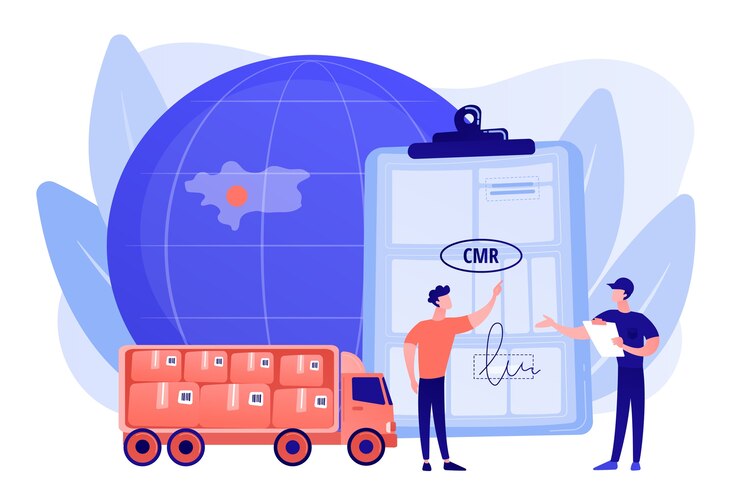20 Sep

|
Getting your Trinity Audio player ready...
|
In disaster-stricken areas, time is of the essence. The quicker relief equipment is unloaded and distributed, the sooner life-saving aid can reach those in need. This blog post addresses how to streamline the unloading process for effective disaster response. From strategic planning to the utilization of advanced technology, we’ll explore key strategies that ensure relief efforts are swift and impactful.
Table of Contents
Understanding the Impact of Rapid Deployment
Every second counts in a disaster zone. Rapid deployment of relief equipment can significantly impact the survival and recovery of affected communities. When equipment is unloaded promptly, it reduces the gap between arrival and assistance. Consequently, emergency teams can set up shelters, medical facilities, and food distribution points faster, providing immediate relief to those in need.
The positive effects of quick deployment extend beyond immediate relief. Efficient logistics can help mitigate the long-term economic and social impacts of disasters by stabilizing communities quicker. Additionally, it fosters trust and collaboration among international aid organizations, local governments, and affected populations, all vital for successful recovery efforts.
Pre-Planned Logistics and Coordination
Effective disaster response starts long before the actual event. Pre-planned logistics and coordination are essential to ensure that relief equipment reaches its destination swiftly. Organizations must establish partnerships with local authorities, NGOs, and other stakeholders to create a seamless supply chain.
Coordination involves determining the appropriate routes, modes of transportation, and potential obstacles. By conducting regular training exercises, teams can anticipate challenges and adapt their strategies accordingly. This proactive approach reduces delays and enables a more efficient response when a disaster strikes.
Utilizing Advanced Technology for Efficiency
Technology plays a crucial role in optimizing the unloading process. Drones, for example, can be used for aerial surveys to assess damage and identify suitable unloading zones. This real-time data allows teams to make informed decisions on where to disperse resources effectively.
Barge unloading equipment offers a modern solution for coastal regions, providing a fast and efficient way to transfer goods from ships to shore. The use of such specialized equipment minimizes manual handling, reducing the time and effort required to distribute aid.
Training and Equipping Response Teams
Human resources are as critical as logistics in disaster response. Well-trained and equipped teams are vital for executing efficient unloading operations. Regular training programs should focus on improving skills in handling equipment, coordinating with various agencies, and maintaining safety standards.
Equipping response teams with the right tools, such as forklifts, cranes, and protective gear, ensures they can operate effectively in challenging environments. By investing in their capabilities, organizations can enhance the overall efficiency and effectiveness of relief efforts.
Building Partnerships with Local Communities
Local communities are often the first responders in any disaster. Building partnerships with these communities can significantly enhance the unloading process. Engaging them in planning and training exercises empowers locals to take an active role in relief efforts, thus speeding up the overall process.
These partnerships also foster mutual trust and understanding, making it easier to communicate and coordinate during emergencies. By leveraging the local knowledge and resources, relief organizations can address specific needs more effectively and ensure that aid reaches the most vulnerable populations.
Efficient Transportation and Distribution Networks
Transporting and distributing relief equipment is a complex task that requires meticulous planning. Establishing efficient networks is crucial to minimize delays and ensure that resources reach their intended destinations. This involves selecting the right vehicles, routes, and distribution points to facilitate swift delivery.
Organizations can employ GPS tracking systems to monitor the movement of goods in real-time, allowing them to adjust plans if necessary. By analyzing traffic patterns and road conditions, they can avoid potential bottlenecks and ensure a smooth flow of aid.
Regular Evaluation and Improvement
Continuous evaluation and improvement are essential for maintaining an efficient relief operation. After each disaster response, organizations should conduct thorough assessments to identify strengths and areas for improvement. These evaluations provide valuable insights that can be used to enhance future operations.
Feedback from field teams, partner organizations, and affected communities can inform decision-making and lead to more effective strategies. By fostering a culture of learning and adaptability, organizations can ensure they are always prepared to respond swiftly and effectively to any crisis.
Focusing on Sustainability and Resilience
While rapid deployment is crucial, sustainability and resilience should not be overlooked. Long-term recovery efforts depend on building resilient systems that can withstand future disasters. This involves implementing environmentally friendly practices and investing in infrastructure that supports recovery and growth.
By prioritizing sustainability, organizations can reduce their ecological footprint and contribute to the overall resilience of affected communities. This holistic approach ensures that relief efforts not only address immediate needs but also lay the groundwork for sustainable development.
Conclusion
Unloading relief equipment quickly is vital for effective disaster response. By pre-planning logistics, utilizing advanced technology, and building local partnerships, organizations can enhance their ability to provide timely and impactful assistance. Continuous evaluation and a focus on sustainability further strengthen relief efforts, ensuring they meet both immediate and long-term needs. For those eager to contribute to this critical mission, consider further exploring logistics and disaster management strategies to refine your approach and maximize effectiveness.


